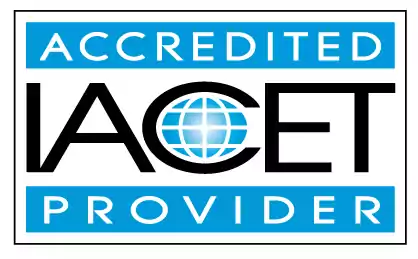Identify safe practices in the prevention of and response to food and other allergies in the childcare environment.
Learn safe practices to prevent and respond to food and other allergies in the childcare environment. Discover appropriate strategies for identifying, preventing, and treating communicable diseases in childcare. Enhance your knowledge in early childhood education and child care centers.Trainings incorporating this outcome
CDA Subject Areas
Proficiency Level
Topic Areas
States
Alabama (5) Alaska (5) Alberta (5) Arizona (5) Arkansas (1) Australia (5) California (5) Colorado (5) Connecticut (5) Delaware (5) District of Columbia (5) Florida (5) Georgia (4) Hawaii (5) Idaho (5) Indiana (5) Iowa (5) Jamaica (2) Kansas (5) Louisiana (5) Maine (5) Manitoba (2) Maryland (3) Massachusetts (5) Michigan (5) Minnesota (3) Mississippi (5) Missouri (1) Montana (5) Nebraska (5) Nevada (2) New Hampshire (5) New Jersey (2) New Mexico (5) New York (4) Newfoundland and Labrador (5) North Carolina (1) North Dakota (5) Nova Scotia (5) Ohio (5) Oklahoma (5) Oregon (5) Pennsylvania (2) Prince Edward Island (5) Puerto Rico (3) Quebec (5) Rhode Island (5) Saskatchewan (5) South Carolina (2) South Dakota (5) Tennessee (3) Texas (6) Thailand (2) United Kingdom (2) Utah (5) Vermont (5) Virgin Islands (5) Virginia (5) Washington (5) West Virginia (5) Wisconsin (4) Wyoming (4)
35 hours courses
24 hours courses
10 hours courses
6 hours courses
2 hours courses
 0.2 CEUs
0.2 CEUs online
4.5/5
1 hours courses
Related Outcomes
- Identify appropriate practices for identify and demonstrate an children: Identify examples of appropriate activities for different ages
- Identify appropriate practice for the identification, prevention, and treatment of communicable diseases in childcare.
- Identify appropriate practices for identify and demonstrate an children: Define Developmentally Appropriate Practice
- Identify appropriate practices for identify and demonstrate an children: Identify importance of individual planning
- Identify ways to organize a safe environment under the guidance of the Office of Child Care Regulations
- Identify appropriate practice for the identification, prevention, and treatment of communicable diseases and illnesses in child care setting
- Identify safe practices with infants including SIDS, Abusive Head Trauma, and SBS.
- Demonstrate best practices in bullying prevention and response
- Identify the implications of the childcare professional in promoting sound health and safety principles in the child care environment
- Identify procedures that will promote a safe environment (indoor and outdoor).
- Identify procedures that will promote a safe environment (indoor and outdoor)
- Identify appropriate practices for identify and demonstrate an children: components of a lesson plan
- Demonstrate how to create a safe environment according to childcare regulations
- Identify practices for managing Illnesses, diseases, allergies, and medication in child care.
- Identify appropriate practices for identify and demonstrate an children: Teacher directed vs child directed
- Explain appropriate practices for the identification, prevention, and treatment of communicable diseases in childcare
- Identify family childcare learning environments and discuss the pros and cons of each room and display
- Identify strategies and practices for preventing shaken baby syndrome and abusive head trauma in the child care setting
- Identify the requirements of an appropriate environment that will promote free exploration and manipulation.
- List recommended feeding schedules and identify strategies for introducing new food for children birth through age three.
Related Articles
- ASTHMA AND ALLERGIES Caring for Children with Asthma and Allergies in Child Care Facilities
- Play it Safe New Hampshire
- Keeping Florida Kids Healthy and Safe
- Oregon Providers Health and Safety Training
- Nevada Initial Training Requirements: Medication Administration
- Child care education
- Every Childcare Provider Must Be Trained in Basic Health & Safety
- Why Every Childcare Worker Needs This CPR & First Aid Training
- Basic Health and Safety: The Must-Know Training for Childcare Professionals
- Emergency Preparedness Training for Childcare Providers: Keeping Kids Safe in a Crisis
- MSDE Basic Health and Safety: What Does It Cover?
- Medical Administration Training for Childcare Staff: More Than Just a Requirement
- From Meds to Milestones: Why Medical Administration Training Is Crucial in Child Care Settings
- Legal Steps, SIDS Certification, and Safety Training in Daycare Made Easy
- From Tornadoes to Lockdowns: Prepare Your Childcare Center for the Unexpected
- Demystifying the Online MSDE Basic Health and Safety Course
- Critical Skills for Childcare Professionals: Health, Safety, and Emergency Preparedness Training
- 🧸 How Can Everyday Safety Transform Your Child Care Environment?
- 🚀How Can New Staff Quickly Get Oriented to North Dakota’s Childcare Standards?